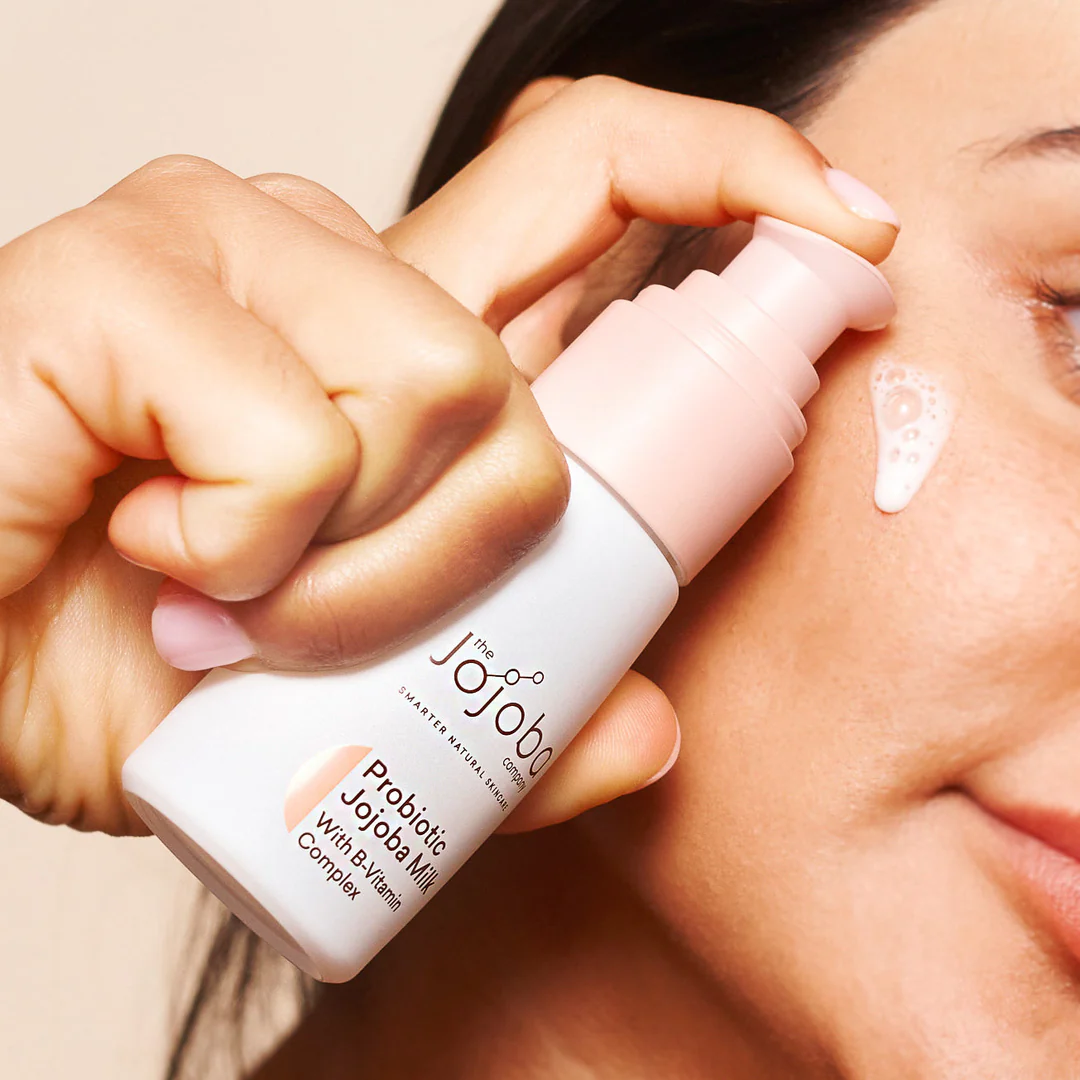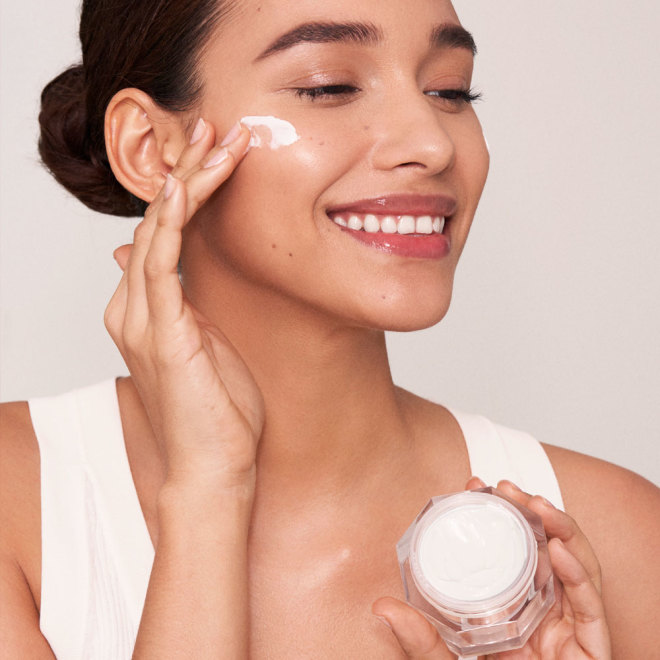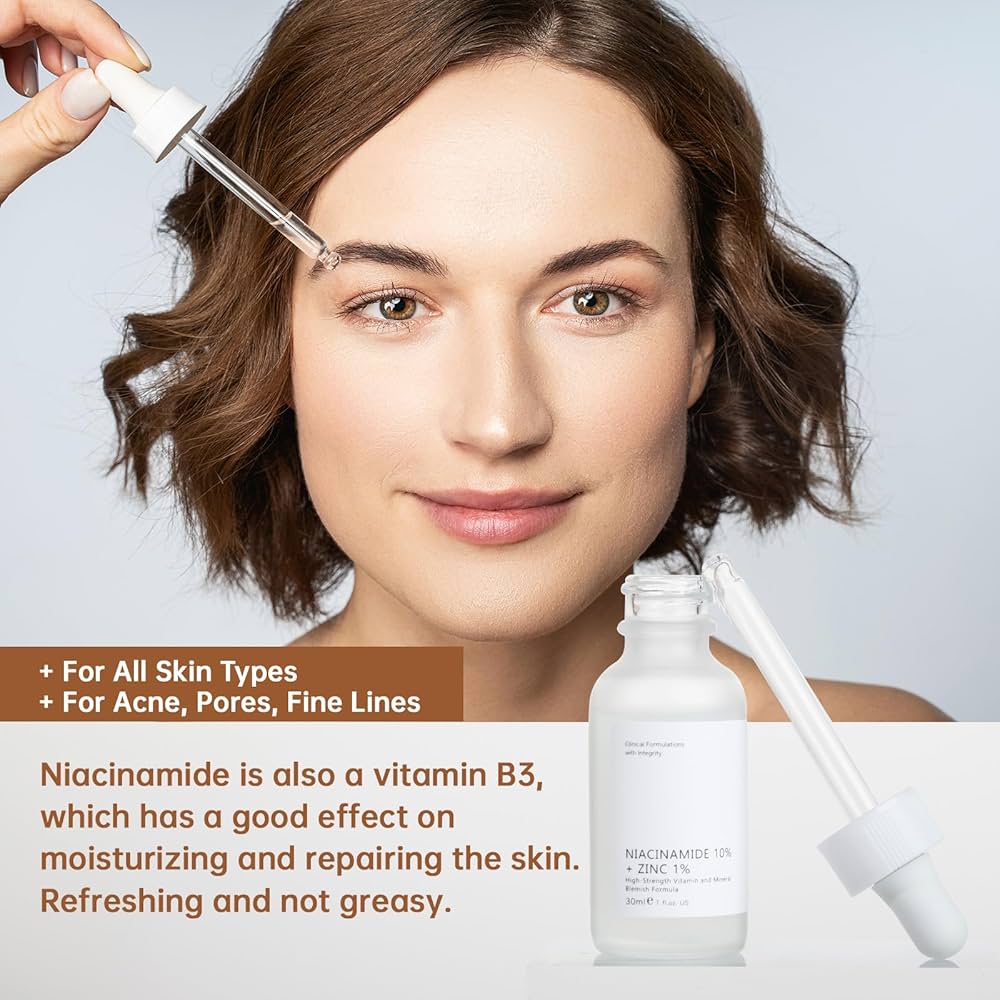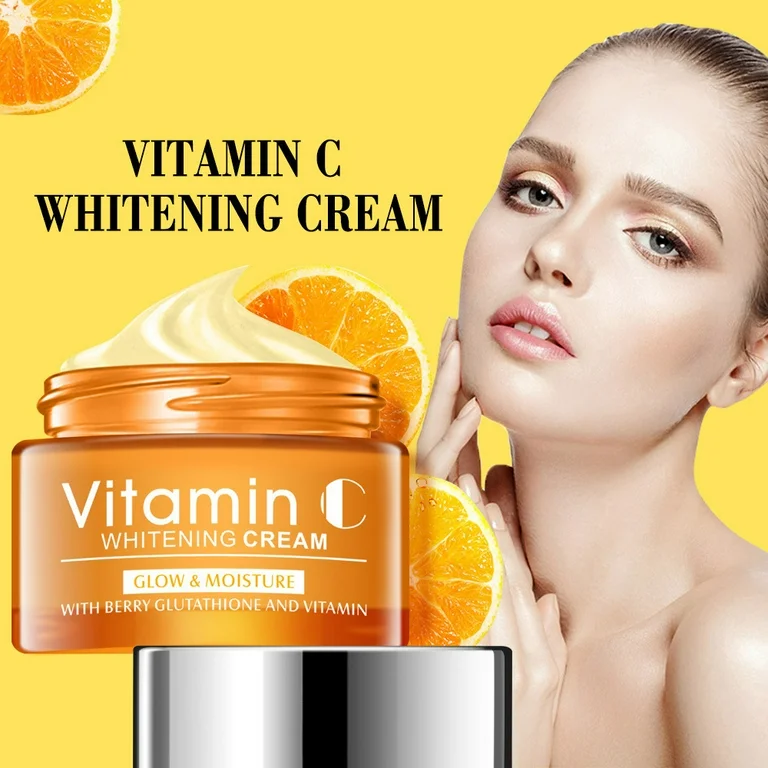Understanding the Power of Face Cream Serums
Face cream serum anti-aging have revolutionized skincare routines worldwide. These potent formulations deliver concentrated active ingredients deep into the skin, targeting specific concerns like aging. Unlike traditional moisturizers, serums contain smaller molecules that penetrate more effectively. This allows them to address issues such as fine lines, wrinkles, and loss of elasticity at the cellular level. The popularity of face cream serums continues to grow as more people discover their transformative effects. These products offer a versatile solution for various skin types and concerns.
From hydration to brightening, serums cater to diverse needs. However, their anti-aging properties remain particularly sought-after. Many users report visible improvements in skin texture and appearance after incorporating serums into their routines. The beauty industry constantly innovates, developing new formulations with cutting-edge ingredients. This ongoing research ensures that face cream serums remain at the forefront of skincare technology. As a result, consumers have access to an ever-expanding range of options. Understanding the science behind these products helps in choosing the right serum for individual needs. This blog post delves into the world of anti-aging face cream serums, exploring their benefits, key ingredients, and proper usage.

The Science Behind Anti-Aging Serums
Anti-aging serums work by addressing the underlying causes of skin aging. These include factors like oxidative stress, loss of collagen and elastin, and decreased cell turnover. Advanced formulations target multiple aspects of aging simultaneously. For instance, antioxidants in serums neutralize free radicals, preventing cellular damage. Meanwhile, peptides stimulate collagen production, improving skin firmness and elasticity. Hyaluronic acid, another common ingredient, attracts and retains moisture, plumping the skin and reducing the appearance of fine lines.
The effectiveness of anti-aging serums stems from their concentrated nature. They contain higher percentages of active ingredients compared to regular moisturizers. This allows for more dramatic results in a shorter time frame. Additionally, the lightweight texture of serums enables quick absorption. The skin readily takes in these beneficial compounds, maximizing their impact. Some serums also incorporate time-release technology, ensuring a steady supply of active ingredients throughout the day or night. This sustained delivery system enhances the overall efficacy of the product. Understanding these scientific principles helps consumers make informed choices when selecting anti-aging serums. It also underscores the importance of consistent use for optimal results.
Key Ingredients in Anti-Aging Face Cream Serums
Anti-aging face cream serums harness the power of various potent ingredients. Retinol, a derivative of vitamin A, stands out as a gold standard in anti-aging skincare. It accelerates cell turnover, boosts collagen production, and improves skin texture. Vitamin C, another powerhouse ingredient, brightens the complexion and protects against environmental damage. Niacinamide, or vitamin B3, reduces inflammation and evens out skin tone. Peptides play a crucial role in many anti-aging serums. These short chains of amino acids act as messengers, signaling the skin to produce more collagen.
Hyaluronic acid, as mentioned earlier, provides intense hydration and plumping effects. Some serums incorporate growth factors, which stimulate cellular renewal and repair. Plant-based ingredients like green tea extract and resveratrol offer antioxidant benefits. Newer formulations may include innovative compounds such as bakuchiol, a natural alternative to retinol. Ceramides help strengthen the skin barrier, while alpha-hydroxy acids (AHAs) gently exfoliate and improve skin texture. The combination of these ingredients in varying concentrations allows for customized solutions to different aging concerns. Understanding the role of each component helps in selecting the most suitable serum for individual needs.

Choosing the Right Anti-Aging Serum for Your Skin Type
Selecting the perfect anti-aging serum requires consideration of individual skin types and concerns. For dry skin, look for serums rich in hyaluronic acid and ceramides. These ingredients provide much-needed hydration and help repair the skin barrier. Oily or acne-prone skin benefits from lightweight, oil-free formulations containing niacinamide or salicylic acid. These ingredients help control excess sebum production and prevent breakouts. Sensitive skin types should opt for gentle serums with soothing ingredients like aloe vera or chamomile. Avoid harsh actives that may cause irritation.
For combination skin, consider using different serums on various areas of the face to address specific concerns. Those with mature skin may benefit from serums containing higher concentrations of retinol and peptides. These potent ingredients target deep wrinkles and loss of firmness. When choosing a serum, pay attention to the order of ingredients listed on the product label. Ingredients appearing at the beginning of the list are present in higher concentrations. Additionally, consider any specific skin issues you want to address, such as hyperpigmentation or redness. Some serums target multiple concerns, while others focus on one particular aspect of skin aging. Remember that consistency is key when using anti-aging serums. Results may take several weeks to become noticeable, so patience and regular use are essential.
Proper Application Techniques for Maximum Efficacy
To maximize the benefits of anti-aging face cream serums, proper application is crucial. Start with a clean, dry face to ensure optimal absorption. Gently cleanse the skin and pat it dry before applying the serum. Use a small amount of product, typically a pea-sized drop for the entire face. A little goes a long way with concentrated serums. Apply the serum using gentle, upward motions. This technique helps stimulate circulation and promotes better absorption. Pay special attention to areas prone to aging, such as the forehead, around the eyes, and the neck.
Allow the serum to absorb fully before applying moisturizer or sunscreen. This usually takes about 30 seconds to a minute. For daytime use, always follow up with a broad-spectrum sunscreen to protect the skin from UV damage. Some serums are designed for specific times of day. For instance, vitamin C serums work well in the morning to provide antioxidant protection. Retinol-based serums are often recommended for nighttime use due to their photosensitizing effects.
When introducing a new serum into your routine, start slowly. Use it every other day initially, then gradually increase frequency as your skin adjusts. This approach minimizes the risk of irritation, especially with potent active ingredients. Consistency is key, so aim to use the serum daily for best results. With proper application and regular use, anti-aging serums can significantly improve skin appearance over time.

Combining Serums with Other Skincare Products
Integrating anti-aging serums into a comprehensive skincare routine enhances their effectiveness. Start with a gentle cleanser to remove impurities without stripping the skin. Follow with a toner if desired, which can help balance pH levels and prepare the skin for subsequent products. Apply the serum next, allowing it to absorb fully. After the serum, use a moisturizer to seal in hydration and further nourish the skin. For daytime routines, finish with a broad-spectrum sunscreen to protect against UV damage.
Some people prefer using multiple serums to target different concerns. In this case, apply them from thinnest to thickest consistency. Allow each serum to absorb before applying the next. However, be cautious about mixing certain active ingredients. For example, avoid using vitamin C and retinol together, as they can neutralize each other’s effects. Instead, use vitamin C in the morning and retinol at night. When incorporating new products, introduce them gradually to avoid overwhelming the skin.
This approach allows you to identify any potential irritants or allergic reactions. Remember that more is not always better in skincare. Using too many products can lead to irritation or reduced efficacy. Focus on a few high-quality products that work well together. Regular exfoliation can enhance the penetration of serums, but avoid over-exfoliating, which can compromise the skin barrier. By thoughtfully combining serums with other skincare products, you can create a powerful anti-aging regimen tailored to your specific needs.
Common Mistakes to Avoid When Using Anti-Aging Serums
While anti-aging serums offer numerous benefits, certain mistakes can hinder their effectiveness. Overusing serums ranks as a common error. Applying too much product doesn’t increase its benefits and may lead to waste or skin irritation. Stick to the recommended amount, usually a pea-sized drop for the entire face. Another mistake involves neglecting other aspects of skincare. Serums work best as part of a comprehensive routine that includes cleansing, moisturizing, and sun protection.
Skipping sunscreen, in particular, can counteract the benefits of anti-aging serums. UV damage accelerates skin aging, undoing the positive effects of your skincare efforts. Mixing incompatible ingredients often leads to reduced efficacy or skin irritation. For instance, using retinol and alpha-hydroxy acids together can cause excessive dryness and sensitivity. Research product ingredients or consult a dermatologist to ensure compatibility. Impatience represents another common pitfall. Anti-aging serums require consistent use over time to show noticeable results.
Expecting overnight miracles often leads to disappointment and abandonment of potentially effective products. Give serums at least 4-6 weeks of regular use before evaluating their impact. Neglecting to patch test new products can result in unexpected skin reactions. Always test serums on a small area of skin before applying them to your entire face. Finally, storing serums improperly can degrade their active ingredients. Keep them in a cool, dark place and follow the manufacturer’s storage recommendations. By avoiding these common mistakes, you can maximize the benefits of your anti-aging serum and achieve better results.
The Role of Diet and Lifestyle in Supporting Anti-Aging Efforts
While face cream serum anti-aging serums play a crucial role in skin health, diet and lifestyle factors significantly impact the aging process. A balanced diet rich in antioxidants supports skin health from within. Foods high in vitamins C and E, such as citrus fruits and nuts, help fight free radical damage. Omega-3 fatty acids, found in fatty fish and flaxseeds, contribute to skin hydration and elasticity. Staying hydrated by drinking plenty of water helps maintain skin plumpness and flush out toxins. Adequate sleep allows the skin to repair and regenerate.
Aim for 7-9 hours of quality sleep each night to support your anti-aging efforts. Regular exercise improves circulation, delivering oxygen and nutrients to skin cells. It also promotes collagen production and helps manage stress, which can accelerate skin aging. Limiting alcohol consumption and avoiding smoking contribute significantly to maintaining youthful skin. These habits dehydrate the skin and introduce harmful toxins that accelerate aging.
Sun protection remains paramount in any anti-aging strategy. Wear broad-spectrum sunscreen daily and seek shade during peak sun hours. Stress management techniques like meditation or yoga can help reduce cortisol levels, which can break down collagen. By adopting these healthy habits alongside your anti-aging serum routine, you create a holistic approach to combating signs of aging. Remember that internal health reflects on your skin, enhancing the effects of topical treatments.

Latest Innovations in Anti-Aging Serum Technology
The field of anti-aging skincare constantly evolves, with new technologies emerging regularly. Recent innovations focus on enhancing ingredient delivery and efficacy. Nanotechnology allows for the creation of ultra-small particles that penetrate deeper into the skin. This technology improves the absorption and effectiveness of active ingredients. Microencapsulation represents another breakthrough, protecting sensitive ingredients and ensuring their controlled release over time. Some cutting-edge serums incorporate stem cell technology, using plant-based stem cells to stimulate skin regeneration. These formulations aim to boost the skin’s natural repair mechanisms.
Peptide technology continues to advance, with new synthetic peptides designed to target specific aspects of skin aging. These compounds can signal the skin to produce more collagen or relax facial muscles to reduce wrinkles. Adaptogenic ingredients, derived from plants that help the body resist stressors, are gaining popularity in anti-aging serums. These components aim to improve the skin’s resilience to environmental factors. Some brands are exploring the use of artificial intelligence to create personalized serum formulations.
These systems analyze individual skin characteristics to recommend tailored ingredient combinations. Sustainable and clean beauty trends also influence serum development, with a focus on natural, ethically sourced ingredients. Biodegradable packaging and waterless formulations address environmental concerns. As research continues, we can expect even more innovative approaches to anti-aging skincare in the coming years. These advancements promise to deliver more effective, personalized solutions for combating signs of aging.
The Future of Anti-Aging Skincare: Trends and Predictions
The future of anti-aging skincare looks bright, with several emerging trends shaping the industry. Personalization stands out as a key focus, with companies developing technologies to analyze individual skin needs. DNA testing for skincare recommendations may become more widespread, allowing for truly tailored anti-aging solutions. Artificial intelligence and machine learning will likely play larger roles in formulating and recommending products. These technologies can process vast amounts of data to identify effective ingredient combinations for specific skin types and concerns.
The line between skincare and technology may blur further, with the development of wearable devices that monitor skin health in real-time. These gadgets could provide instant feedback on hydration levels, UV exposure, and other factors affecting skin aging. Sustainability will continue to drive innovation, with brands exploring eco-friendly packaging options and sourcing practices. Upcycled ingredients and zero-waste formulations may become more common in anti-aging serums.
The focus on holistic approaches to anti-aging will likely intensify, with more products addressing the mind-skin connection. Ingredients that combat the effects of stress and pollution on the skin may gain prominence. Ingestible beauty products, designed to support skin health from within, could become more integrated with topical anti-aging routines. As our understanding of the aging process deepens, we may see serums targeting newly discovered aspects of skin aging at the molecular level. The anti-aging skincare market will undoubtedly continue to evolve, offering exciting possibilities for maintaining youthful, healthy skin.
